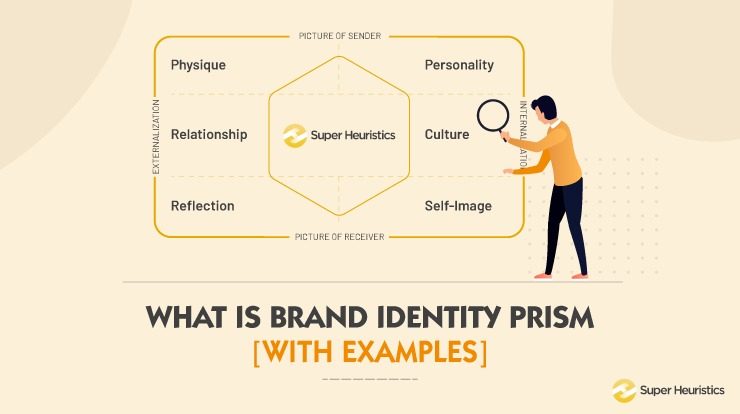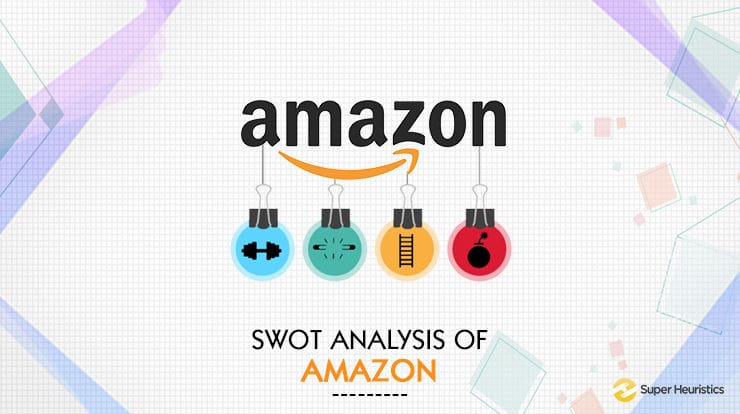
Ever thought if brands have identity? Well, I did not until I came into marketing MBA and started developing this perspective of studying all aspects of a brand. The logo, the colour, the tone, the music, the mascots etc.
Imagine how the marketers behind the most successful brands shape all the aspects of a brand and bring about the brands that would be known by generations to come. But how do they do it? Do they have any special tools?
Yes, they do.
And one such tool is the brand identity prism helps you achieve an unforgettable brand identity. Let us understand all the concepts related to a brand identity prism along with examples that will help you grasp the concept better.
What is Brand Identity Prism?
The Brand Identity Prism model was created by J. Kapferer in 1986. He was an enthusiastic marketer and also a professor of marketing strategy. According to Kapferer, there are mainly six elements of a brand that helps in forming the brand’s identity in the mind of consumers.
Thus, he coined the concept of brand identity prism and built a model that focused on these six elements that interact and from an identity as a whole.

Definition – Brand Identity Prism is a six-element model that represent the identity of a brand as a whole. Following are the elements of the brand identity prism:
- Physique
- Personality
- Culture
- Self-Image
- Reflection
- Relationship
The prism will allow you to represent all the above characteristics in the form of a prism and thus better map it to one another.
It also helps in differentiating brand from one another which are generally quite similar. For example, Coca Cola and Pepsi. If you ask an average person, they might use Coke and Pepsi synonymously. But as a marketer you should know how both the brands have successfully created a unique brand identity to differ from one another.
A difference between Coca Cola and Pepsi with the help of a brand identity prism is discussed later in this article.
What are The Six Elements of Brand Identity Prism?
The six elements are divided into two broad categories i.e., externalization and internalization. Physique, Relationship and Reflection are externalized elements of the brand identity prism which depend upon how the brand appears to the consumer.
Whereas, Personality, Culture and Self-Image are internalized elements that depend upon how the brand wants to appear to the consumer.
Let us discuss about all the six elements of the brand identity prism in detail.
Physique
Remember reading this in a romantic novel, where the writer is describing everything about the guy she just saw “He looked like a super-model just walked out of fashion festival wearing his yellow colour t-shirt and khaki pants, his hair messy but perfect, I could see his six-pack abs though his t-shirt, the tattoo on his left hand seemed like it meant to be…”
The writer is describing the person she just saw based on his outside physicality for example, yellow colour t-shirt, khaki pants, tattoo, messy hair etc. In Physique you do just that.
You describe the physical characteristics of a brand that are visible i.e., the logo, colours of the brand, packaging etc.

For example, in the above image, I will describe the physical characteristics of Pringles as:
Red cylindrical container, chip with a moustache and bow tie, yellow logo, simple font, chip dancing on the stage.
Personality
Remember this when you talk about personality “If the brand was a human being, who will it be”. For example, let’s say if Vaseline body lotion was a human being who will it be?
I would say – Aishwarya Rai

Let’s say if Axe body perfume was a human being who will it be?
I would say – John Abraham

Personality however doesn’t mean choosing the right brand ambassador for the brand. In the above examples I referred Aishwarya Rai because of her soft skin and overwhelming beauty which Vaseline body lotion is known for. It has created an identity that way.
Similarly, John Abraham because Axe is sporty, hunky and very manly. I couldn’t think of anyone better than John Abraham.
Answers for the above examples may differ from person to person depending upon the perception, but as a marketer you need to ensure that the personality of your brand is being perceived by the consumers in the way you want to.
For example, if some of you answer Akshay Kumar for Axe body perfume then Axe is successful in its job, but if you answer Johnny Lever then Axe needs to revise its brand identity prism. However, Johnny Lever would be a great example for a brand like “Sony Sab”
Culture
Culture describes the values, ideals, morals, style of working, relationship between staff members etc. of a brand. For examples, culture for Apple would be US based culture of working, democratic, consumer-centric etc.
Self-image
Ask this question to yourself when describing self-image in the brand identity prism- “what do I feel when I use the brand” i.e., you as a consumer, what is the feeling that you get when you use a particular brand.
For example, if I use Lakme products, I feel sexy, I feel beautiful. When I use Levi’s, I feel cool, trendy etc.
Brands generally help in achieving certain aspirations that consumer have and self-image describes just that.
Reflection
Reflection helps in answering this question – “How do consumers perceive the brand”. Do not get confused between reflection and self-image. Self-image is more internal to the brand and reflection is external i.e., it majorly depends upon how consumers recognize the brand as.
For example, reflection of a brand like Zara would be very stylish, individualistic (in the image below) and for a brand like Corona would be young, cool, open-minded etc.

Source: twitter.com
Relationship
You are surrounded by brand all the time. Currently I myself am surrounded by thousands of brands such as Classmate, Pringles, Mc Graw Hill, Nykaa etc. It is hard to count all of them on my fingers.
However, I have a relationship will all those brands. I use Nykaa when I want to look beautiful and stylish and Nykaa helps me with that. That is the relationship I have with Nykaa, it is like my beauty partner, my style advisor.
Whenever I go to buy notebooks, I always ask for Classmates, Why? Because I trust Classmate, I trust that Classmate notebooks have soft pages, I trust that I can enjoy smooth writing on Classmate notebooks. That is the relationship I have with Classmate, trustworthy, my buddy in classrooms.
Relationship describes the engagement between the consumers and the brand. Consumers tend to form a strong relationship with certain brands that always meet their expectations.
Understanding the Brand Identity Prism Through Examples
Here we will understand how the brand identity prism helps brand in differentiating themselves from other brands. For this, I have taken two brands Pepsi and Coca Cola that appear similar but in reality, both have their uniqueness in how they position themselves in the mind of consumers and create a distinct brand identity.
Brand Identity Prism of Coca Cola

Brand Identity Prism of Pepsi

There is no question that, both the brands differ in the physique. Both have unique, unforgettable logos and curvy script that gives a notion of being associated with aerated drinks. The major difference can be seen in the personality of both the brands.
Remember the advertisements of Coca Cola and Pepsi. In the case of Coca Cola, you might recollect a festival being celebrated with family, where all the members are having a good time, sharing the drink, making new relationships etc. In case of Pepsi, you might remember the slogan “Har ghoot me swag hai” and the advertisement generally showing a college premises or a football ground.
Here we can see that personality wise, Coca Cola can be seen to be very family oriented and gives happiness. Whereas, in case of Pepsi, it is very youthful and smart.
Conclusion
Brand Identity Prism model is not very hard to understand, however you need to map all the elements together in order to get good results of your brand identity. Keep the following points in mind regarding the concept.
- Brand Identity Prism consists of six elements that help in forming the unique identity of the brand
- The six elements are Physique, Personality, Culture, Self-Image, Reflection, Relationship
- Self-image is an internal characteristic of the brand and Reflection is an external characteristic.







